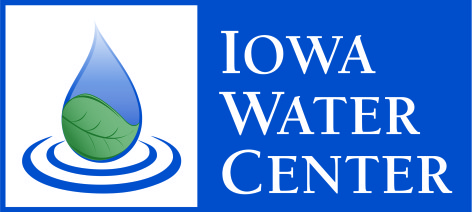AMES, Iowa – Iowans from the Missouri to the Mississippi are celebrating soil and water quality this week, but, for the Iowa Water Center at Iowa State University, it’s a year-round party.
The Iowa Department of Agriculture and Land Stewardship designated April 26 to May 3 Iowa Soil and Water Conservation Week, shining a spotlight on the importance of two of Iowa’s most precious natural resources. It’s a mission near and dear to the Iowa Water Center, said Melissa Miller, the center’s program coordinator.
The Iowa Water Center performs a range of tasks related to water quality in the state of Iowa, everything from holding an annual conference to facilitating communications between government and private interests to funding promising new research. And all those efforts focus on the water-related priorities of Iowans.
“There’s no other state we can look to that has the exact same water challenges that we have in Iowa,” Miller said. “But we’re able to focus on what the problems are in Iowa in a particular year and dedicate our efforts to addressing them.”
An act of Congress signed into law in 1964 created scores of water resource institutes across the country, many of them based at land-grant universities. Iowa State was a natural fit to host one of the centers.
Today, the U.S. Geological Survey administers a network of 54 such centers, covering all 50 states, the District of Columbia, Guam, Puerto Rico and the Virgin Islands.
Every year, the center selects two or three water-related research projects for seed grants of around $30,000. Throughout the center’s history, projects receiving funding have covered a broad range of topics, including flood, drought, agricultural runoff and erosion.
“Water is integrated with so many other disciplines in this state,” said Richard Cruse, a professor of agronomy and director of the center. “Research projects could touch on agronomy, engineering and economics just to name a few. We coordinate and communicate with experts in all of those fields.”
The two projects that received Iowa Water Center funding this year illustrate the point. One of the grants will fund a graduate student at Iowa State who is helping Brian Hornbuckle, an associate professor of agronomy, check the findings of a new NASA satellite designed to measure moisture in soil across the globe. Hydrologists and atmospheric scientists could use these observations to estimate soil water storage and improve the prediction of weather and climate in Iowa.
The other most recent grant will help Gabriele Villarini, an assistant professor of civil and environmental engineering at the University of Iowa, to develop a forecast system using rainfall and row crop production to input monthly discharge values for rivers in Iowa. This information is critical to improving the planning and development of adaptation strategies during flood and drought conditions.
The center receives between 8 and 15 proposals every year, many of them from graduate students at Iowa State, the University of Iowa and the University of Northern Iowa. Cruse said nearly all of them are worthy projects, but the center must narrow the field down to two or three. An advisory board of nine experts in various fields related to water resources helps the center identify the projects with the most potential.
The roughly $30,000 grants are meant to get the projects up and running and help them attract additional dollars. Within only a few years of receiving grants, most of the projects funded by the Iowa Water Center go on to attract as much as 20 times the original funding from other sources, Cruse said.
The center also carries out an outreach function that includes hosting a two-day conference in Ames every March, which attracted about 400 attendees this year.
“Part of our job is to coordinate efforts around the state and put people in touch with one another,” Cruse said. “We serve as a resource for any Iowan with concerns about water quality or water quantity.”
